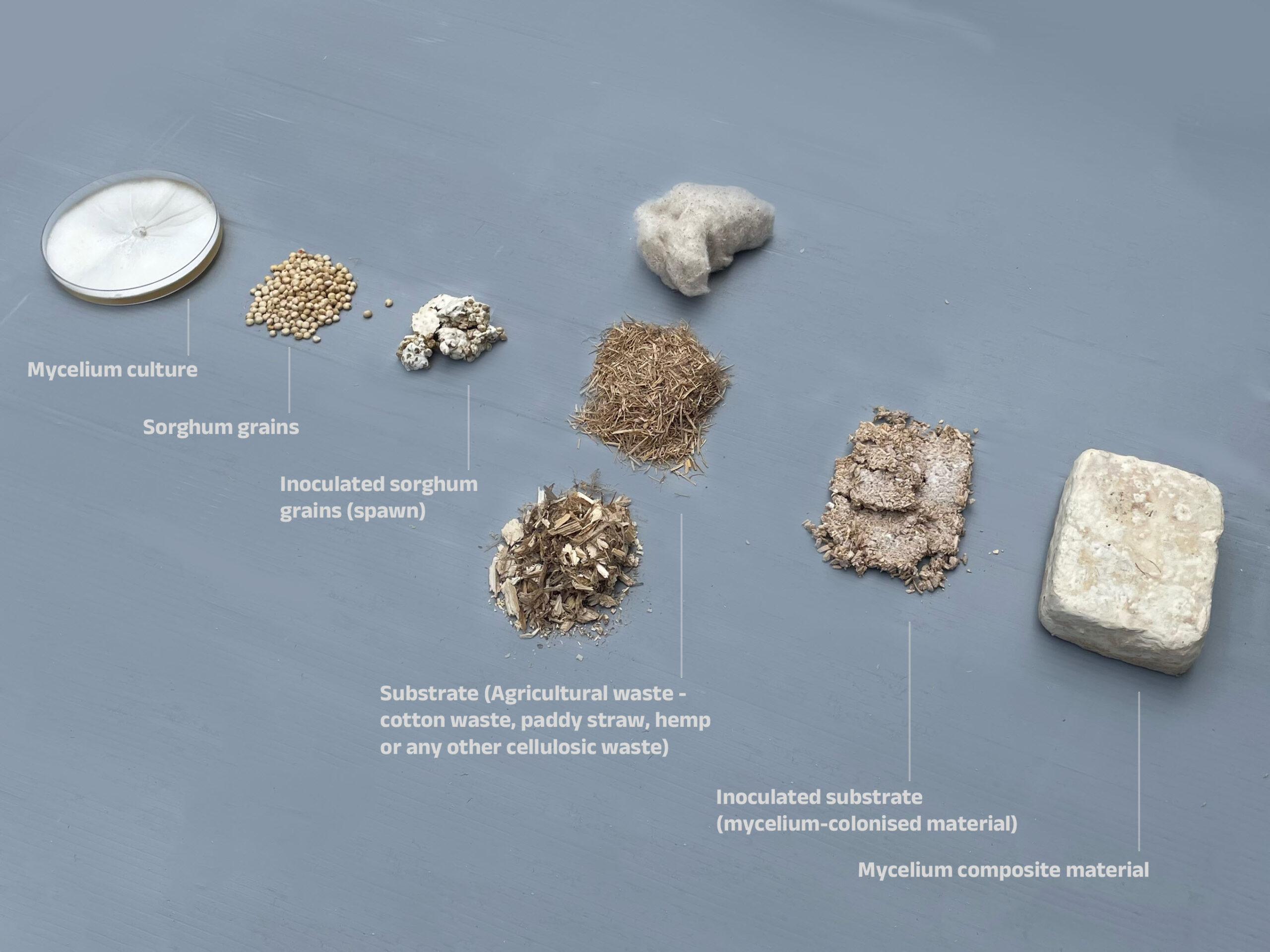Mycelium Project Kick-Off
Mycelium Overview
One of our goals is to utilise our access to the large range of incredible new materials that we come across. I’m a big believer in practicing what we preach, which is why we’re placing a heavy focus on designing and innovating with these incredible materials.
We want to promote and test using these materials within circular systems, demonstrate the capabilities of these materials, and push the boundaries of what is possible for circular design.
To start this process we’re looking at mycelium and designing products that are a part of the bio-cycle and are biodegradable.
What is Mycelium
Mycelium is a very old material that has gained popularity over the last few years. It is the vegetative part of a fungus, consisting of a mass of branching, thread-like structures called hyphae. Think of it as “the root system of fungi”, mycelium-based composites are created by mixing mycelium with a substrate (usually organic waste materials like straw, husk, sawdust, etc.).
Here are some of the advantages of using mycelium in product design:
– Grown material with low energy production process
– Utilises a locally grown waste product as the materials substrate
– Lightweight
– Fire resistant
– High insulating ability
– Fully biodegradable
– Mouldability and formability
– Low carbon footprint
We list several mycelium variations in the Circular Material Library. It can be used in a range of applications, from packaging to product design, to building materials.
It’s a very interesting material and one we feel has a lot of potential, this is why we are also recording our design process, to turn our lessons learned into a design guide.
To make this happen, we’ve partnered with Indian-based company Roha and are excited to start the journey.



